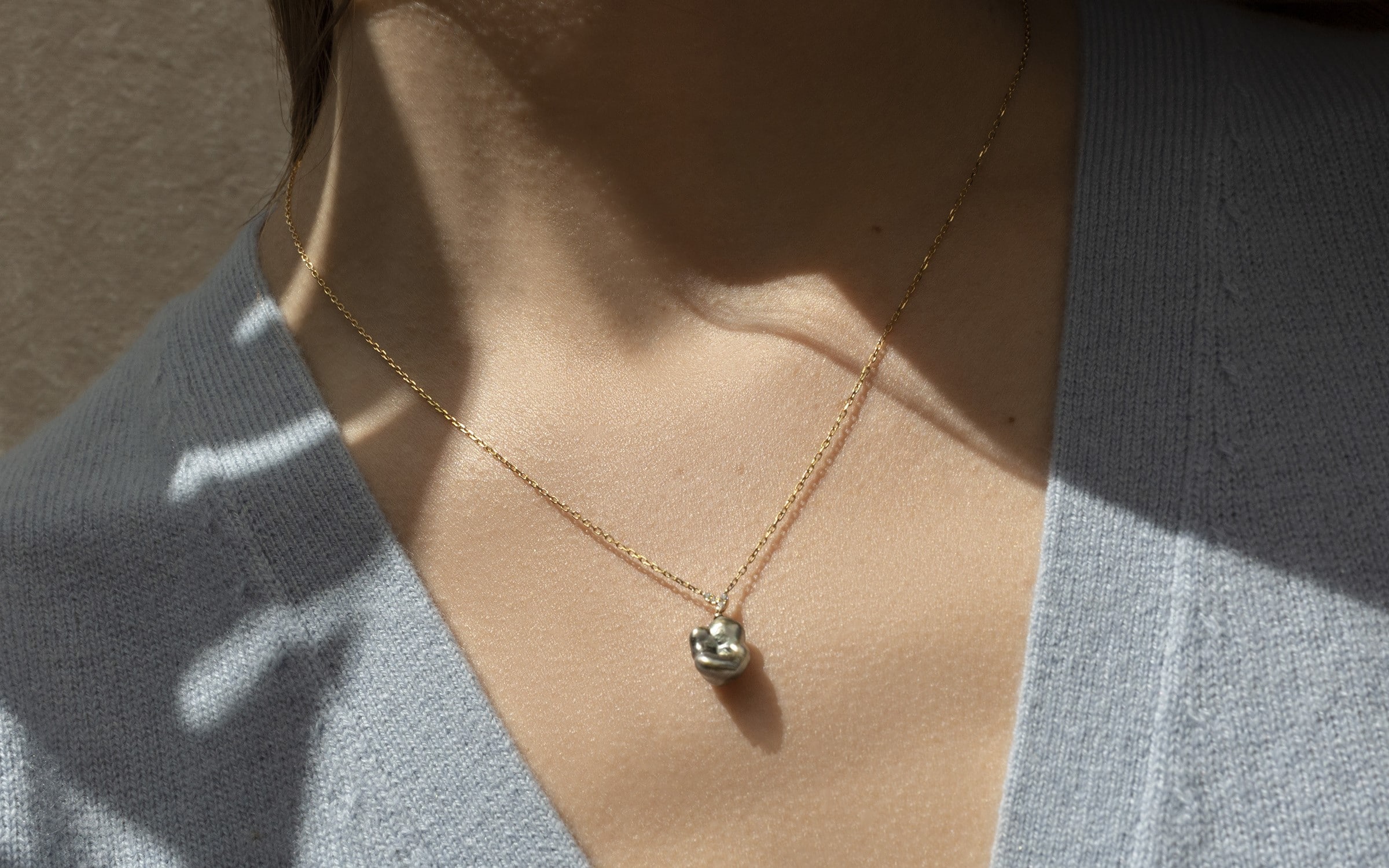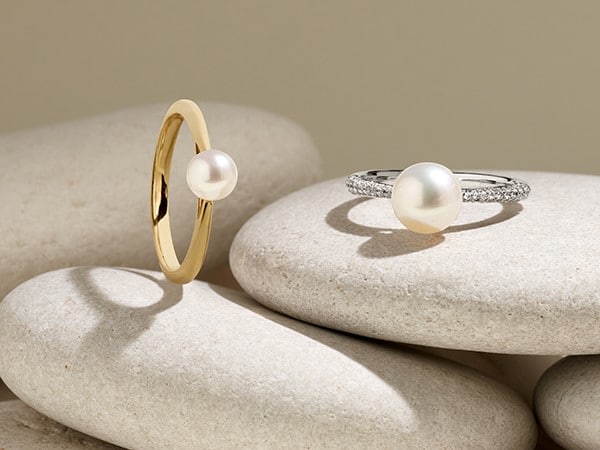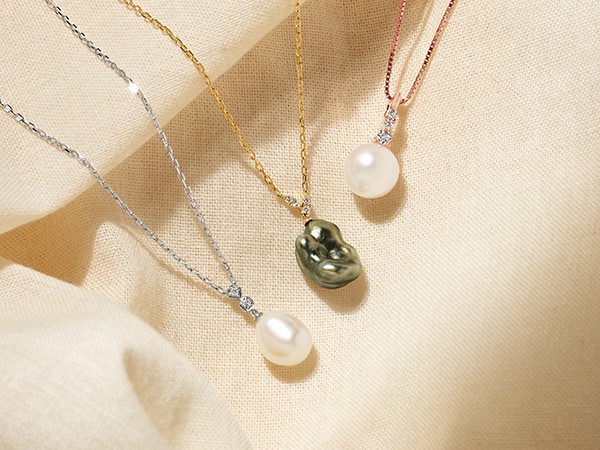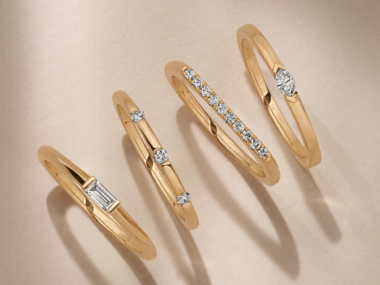
Lustrous and sophisticated pearls are the June birthstone. The June birthstone is a unique gem because it is the only one that is not actually a stone, since it’s formed within various species of freshwater and saltwater mollusks, rather than as minerals underneath the earth. Pearls’ feminine elegance makes them perfect to wear for any occasion, and their unique history makes them one of the most interesting gems in the world.
How are pearls made?
There are two types of real pearls: natural and cultured.
Natural pearls are very rare and valuable because they form at random in nature. When an irritant such as a parasite ends up inside an oyster, mussel or clam, the mollusk reacts by producing a fluid, which coats the irritant. This coating, called nacre, continues to build up layers until the pearl as we know it is created.
Cultured pearls are formed by the same process, but instead of randomly occurring in nature, pearl farmers implant a bead or piece of shell tissue into the mollusks. The mollusks are then suspended in salt water or fresh water while the pearls grow until they are harvested. The length of time to grow the pearls depends on the type of mollusk and the desired pearl size.
Are cultured pearls considered real pearls?
Yes. Cultured pearls have the same chemical makeup as natural pearls, in contrast to imitation pearls, which are made when a glass bead is dipped into a solution made from fish scales. This coating is much thinner than that of a real pearl and will eventually wear off. There are no physical differences between cultured and natural pearls and both will hold their value over time.
Did you know?
To convince Rome that Egypt possessed a wealth greater than its conquerors, Cleopatra made a bet with Mark Antony that she could host the most expensive dinner in history. She then crushed a large pair of pearl earrings into a cup and dissolved it in liquid, drinking it down to the last drop. Antony subsequently declined the dinner and admitted defeat to Cleopatra.

The unique history of pearls
While today it’s relatively easy to find real pearl jewelry that features the June birthstone at an affordable price, this wasn’t always the case. In fact, before the creation of cultured pearls in the early 1900s, pearls were so expensive and rare that only the very rich could afford them.
Humble beginnings
While we don’t know exactly who the earliest pearl collectors are, it’s been hypothesized by George Frederick Kunz, author of the 1908 publication “The Book of the Pearl,” that an ancient fish-eating tribe along the coast of India initially appreciated the appeal of pearls after discovering them from the oysters they consumed in their diet. India’s sacred books have many references to pearls, as do China’s long-recorded historical documents.
The first discovered oyster beds lay in the Persian Gulf along the coasts of India and current-day Sri Lanka as well as the Red Sea, but other centers for pearl cultivation, like Panama and Venezuela, were soon discovered. While Chinese pearls came mainly from freshwater rivers and ponds, Japanese pearls were found near the saltwater coasts. The rarity of pearls began to lessen when English colonizers discovered pearls in the riverbeds of Ohio, Mississippi and Tennessee. In fact, so many gems were exported to Europe that the New World gained the nickname “Land of Pearls.”
Did you know?
At the height of the Roman Empire, historian Suetonius wrote that the Roman general Vitellius financed an entire military campaign by selling just one of his mother’s pearl earrings.
The introduction of cultured pearls
In the 1800s, overfishing in Central and North America depleted oyster beds just as pollution began to set in from industrialization in the United States. This is where the story of cultured pearls begins.
Kokichi Mikimoto, the son of a noodle maker, and his wife, Ume, had dreams of discovering a way for oysters to produce pearls on demand. They weren’t aware that government biologist Tokichi Nishikawa and Tatsuhei Mise had already discovered the secret of pearl culturing.
Mise received a patent in 1907 for his grafting needle, which allowed one to insert an outside contaminant into the oyster’s mantle in order to form a pearl sac. When Nishikawa attempted to file the same patent, the two agreed to unite their common discovery and name it the Mise-Nishikawa method, which is still used today. Mikimoto then altered his technique to create a patent for creating round pearls. This allowed him to buy the rights to the Mise-Nishikawa method and begin his unprecedented expansion.
Myths and symbolism
Because they’ve been a popular gem for such a long time, there are a wide variety of myths and symbolism attached to the pearls. They are believed to be symbolic of wisdom gained through experience, offer protection, and attract wealth and good fortune to the wearer, as well as bring balance to one’s karma. Most notably, they are a symbol of purity and loyalty, making them a popular choice for brides on their wedding day.
It is believed that Eve’s tears created white pearls in the Garden of Eden, while Adam’s tears produced black pearls. This goes along with other religious legends, such as the one where the Hindu god Krishna discovers pearls from the sea and gives them to his daughter on her wedding day. In ancient Vedic texts, pearls are considered to be the “Daughter of the Moon” because of their similarity to the lunar structure. This also contributes to their association with feminine sensibilities.
Standout gifts for a June birthstone

Pearl necklaces: Whether you choose a classic pearl strand or a unique pearl pendant, Shane Co.’s selection of pieces that feature the June birthstone is unrivaled. With the highest-quality cultured akoya pearls, you’re sure to stun in these elegant styles.
Pearl earrings: With their variation in size and timeless appeal, pearls make the perfect pair of earrings. Go with traditional pearl studs or embrace the floral trends of summer with these Cultured Freshwater Pearl and Diamond Cluster Earrings. Fourteen 5-6mm cultured freshwater pearls form a unique shape, complemented by 12 round sparkling diamonds and high-quality sterling silver. Pair them with a matching pendant and ring for a complete set.
Tahitian pearls: With a silvery-green finish unrivaled by anything on Earth, Tahitian pearls are a great way to embrace your birthstone while maintaining a more modern look. This Tahitian Pearl and Diamond Y Necklace is available with matching earrings and comes on an 18″ adjustable chain. With classic touches and on-trend style, this pearl necklace is the perfect June birthstone addition to any wardrobe.
How to care for your pearl jewelry
- Wipe your pearls with a soft cloth after wearing them
- Store your pearls separately from other jewelry in a slightly damp linen cloth
- Don’t wear pearls with metal jewelry to avoid scratching
- Wear your pearls regularly, as the natural oils in your body will maintain the pearls’ luster
- Avoid contact with salt water, perspiration and chlorine
- Never use an ultrasonic or steam cleaner on your pearls
Why shop Shane Co. for pearl jewelry

Like all of our other gems, Shane Co. cultured pearls come directly from the source. We offer high-quality freshwater, akoya, Tahitian and South Sea pearls in a wide range of colors to complement every skin tone and any woman’s personal style. It’s acceptable within the industry to knot between every third or fifth pearl, but we take extra care to prevent all the pearls from scratching each other by placing a knot between each one. This extra precaution also means that if your string breaks, the most you might lose is one pearl, rather than several. Individual knotting also ensures that your pearl strand will be more flexible, feel more comfortable, and conform to the body. Shop our entire pearl jewelry selection on our website, or visit us in-store to speak with one of our dedicated, noncommission jewelry consultants to learn more.



